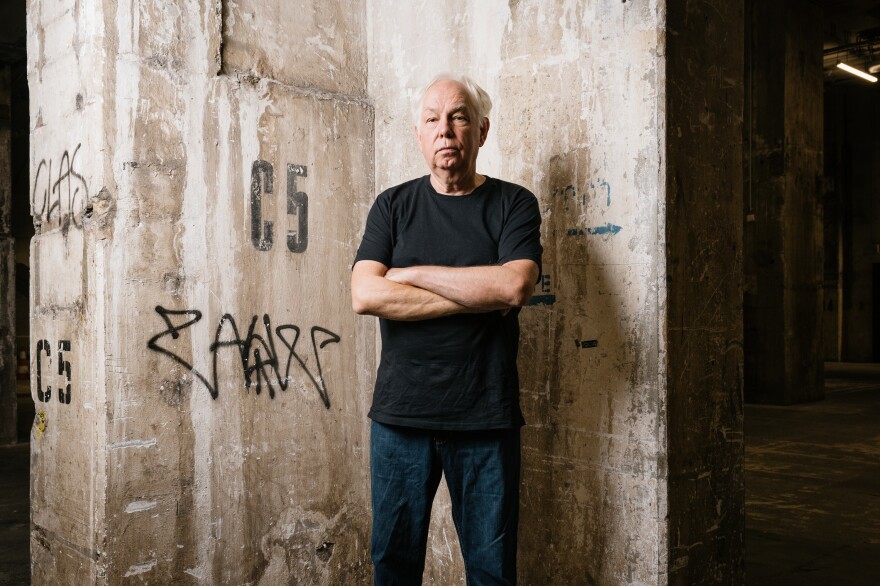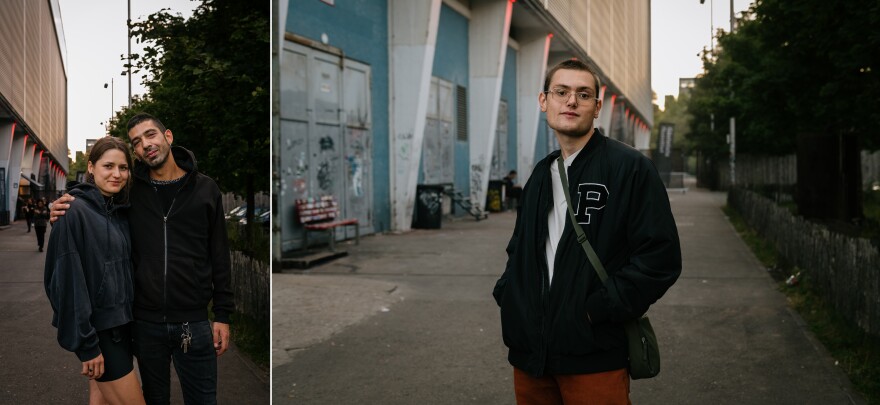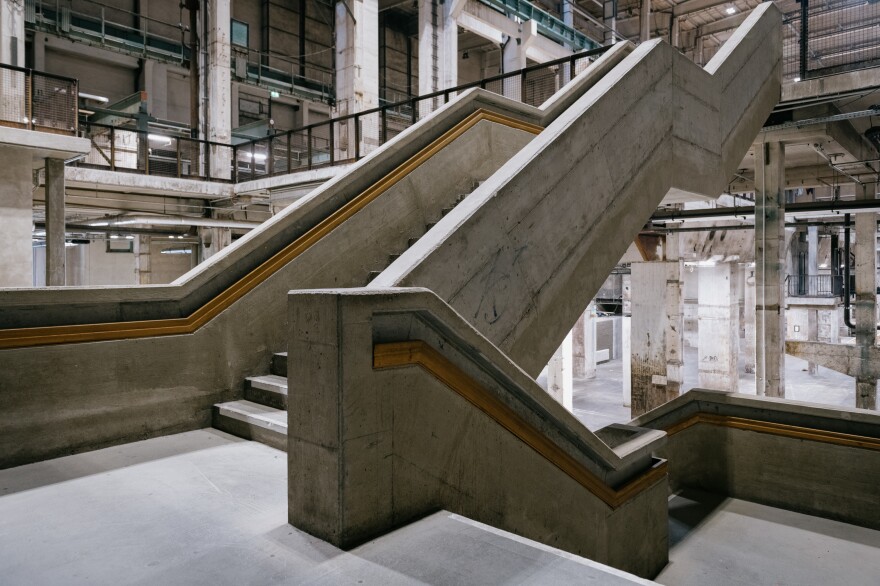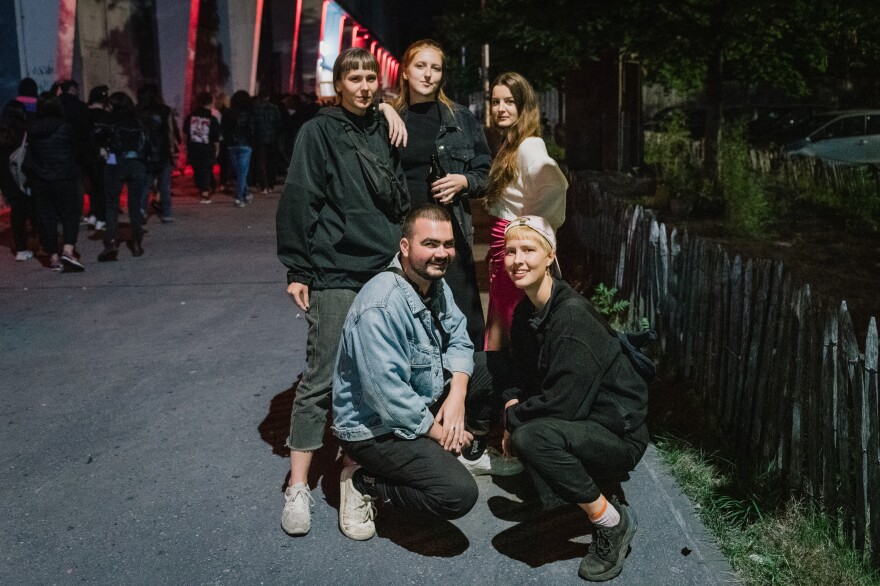BERLIN, Germany — On a recent Sunday morning, hundreds of people, most dressed in all black, lined up outside Berghain, the Berlin techno club made almost mythic by its selective door policy.
Among those hoping to gain entry was Chris Koestlin, a Berlin photographer who goes out clubbing at least once a month. When bars and clubs in Berlin shut down for the first time in 70 years during the pandemic, he says, it tore at the fabric of the city.
"For a lot of people, especially in Berlin, clubbing is not like, 'Oh, I want to go party. I want to get wasted,'" he said. "It's more like a lifestyle, more like a hobby to go out and dance and connect with people."

A key factor of Berlin's scene: The clubs never have to close their doors. Many stay open the entire weekend, leading some ravers to arrive on Friday night and leave Sunday morning.
The roots of Berlin's no-curfew culture can be traced to the start of the Cold War, when negotiations over a bottle of whiskey led to the abolition of a postwar curfew — and set the stage for Berlin's becoming one of the world's hottest destinations for techno music.
The whiskey meeting that changed everything
Following World War II, a divided Berlin kept a strict nighttime curfew, to the annoyance of residents, especially those looking for libations.
By 1949, some had had enough.
"After four years, people wanted to hang out, go out again. People wanted to have a drink," said Dimitri Hegemann, the founder and owner of Tresor, one of Berlin's longest-running clubs.

In West Berlin, controlled by Western allies, bars shut their doors at 9 p.m. In the Soviet-controlled East, the closing time was 10 p.m.
Tired of the East receiving those final-hour dollars, West Berlin moved its curfew one hour later. In response, the East pushed its back another hour. The tit for tat became something of a curfew standoff.
A hotelier named Heinz Zellermayer had enough of it. He grabbed a bottle of whiskey and made his case to Brig. Gen. Frank Howley, the commandant over the American sector of West Berlin.
"They need the hours of the night the way we need our dear bread," Zellermayer is remembered to have said, according to a biography of the family written by his sister, Ilse Eliza Zellermayer.
"Mayhem only comes when the bartender has to say 'closing time,'" the hotel owner insisted.
Zellermayer said nixing the curfew would be good for the economy and that the freedom of no curfew was an expression of Western values.
Howley was persuaded, as was his French counterpart.
The pitch was rejected by the British, however, who worried about pubgoers getting too rowdy.
No matter. In June 1949, by a 2-1 vote, West Berlin's curfew was forever scrapped.
Zellermayer quickly shared the news.
"He called all the bars 10 minutes later. And from that day on, Berlin enjoys the young night every day," Hegemann said. Once the Berlin Wall fell, the former East Berlin adopted the West's lack of curfew.

Recounting the pivotal meeting, a Berlin Club Commission report says, "History does not record how much of the whiskey was actually consumed," yet "in the decades that followed, the myth of Berlin as the city that never sleeps began to take shape."
With no curfew, Berlin draws "techno tourists" and their money
Zellermayer, who died in 2011, is now something of a folk hero among Berlin club owners.
Hegemann, the Tresor owner, has thrown events celebrating his famous whiskey meeting. Some have even dubbed Zellermayer the "ubermeister" of Berlin's bar and club scene.
But others say Zellermayer does not receive the credit he deserves for the 1949 negotiations.
"What it meant for the city itself, and as an attraction for the city, is not really recognized today," said Knut Hoffmeister, a Berlin filmmaker who has focused on this chapter of Germany's history.
Hoffmeister used to run the Global Hangover Guide, a publication dedicated to the consumption of alcohol. In 1999, to celebrate the 50th anniversary of the meeting that ended Berlin's curfew, he arranged for a limousine to pick up Zellermayer. Before he got in, Hoffmeister handed him a bottle of champagne. He then took Zellermayer to the Brandenburg Gate and snapped a photograph of him holding a sign commemorating a half-century of no closing time.

"He gave back the night to the people," Hoffmeister said. "It was a revolutionary deed, absolutely."
It is also a deed that set in motion a powerful economic driver for the city.
Other cities, of course, have clubs that rage on into the morning, or underground scenes where just about anything goes. But Ben Gook, a cultural studies lecturer at the University of Melbourne who studies Berlin's techno scene, says having a law allowing clubs to never close is something that has long made Berlin special.

"I know people have tried that in other cities, but it's always quashed by liquor licensing and other rules like that," he said. "So that is singular in Berlin."
According to the Berlin Club Commission, so-called techno tourism draws more than 3 million people to the city every year. The trade association's most recent survey showed that visitors who flock to the city to club spend about 1.4 billion euros a year in the city, after calculating lodging, food and transportation expenses, or about 8% of total tourism spending each year.
City tourism officials advertise the city's no-curfew rule as a way to entice visitors.
"Go partying till the sun comes up — and goes down again! Unlike other German cities, Berlin has no official closing time," reads the city's VisitBerlin website.

Clubs offer release and inspiration, for those lucky enough to get in
Tresor recently celebrated its 31st anniversary. The club, in a former power plant, is dark and cavernous. Smoke from cigarettes and smoke machines mingles. DJs play mostly hardcore techno music as strobe lights flash across partiers reveling in the steady and ear-splitting thud of the beat.
Inside Tresor, and other venues like Berghain and KitKatClub, partiers groove to the music wearing sunglasses. Sometimes, that is the only thing they're wearing.
Before letting people in, bouncers place stickers on their phone cameras. What happens in a club — whether a marathon dance session, a sexual encounter or even illicit drug use — is meant to stay in the club. Privacy is paramount.
Hegemann, the Tresor owner, says clubs are not just for hedonism and escapism, but also for incubating ideas.
When people take breaks from dancing and relax in other parts of the venue, he says, creative collaborations and business ideas have been born. He thinks this is thanks to the city's lack of a curfew.
"The best ideas are born after 3:30 in the morning," he said. "People come together, we meet and say, 'Hey, we want to join this movement. Let's do something. Maybe we open tomorrow a gallery or a coffee shop.'"

"So I think techno has changed Berlin, has changed Europe, has changed the world," he said.
Back at Berghain, with its endless line of hopefuls waiting outside, Koestlin the photographer said tourists often read too much online about what it takes to get into the club, leading them to overthink it and put on all-black outfits that often lead to rejection.
"It's not really about the clothes, but people think it is," Koestlin said.
Most clubs in Berlin do not allow everyone in who waits in line, but at Berghain, trying to understand the esoteric door policy has become something like trying to navigate a Greek labyrinth. There can be many failed attempts before someone is allowed in.
"Heute leider nicht," some of the bouncers say to those who are rejected, which translates to basically "today is not your day."
The line to get into Berghain on the weekends can stretch for five hours or longer. There is even an Instagram page with 48,000 followers devoted to weekend updates on the length of the line.
Once in front of the entrance, whoever is working the door will make a snap judgment based on a "subjective" assessment, the top bouncer once told GQ.
"You always want friction, though. That's the theme in any good club: diversity, friction," Sven Marquardt told the magazine in a rare 2015 interview.
But the city's absence of a curfew allows people to try multiple times in one weekend, Koestlin pointed out.
"You're rolling the dice every time," Koestlin said. "You have to be yourself and be authentic. If it looks like you're dressed up just to get in, they can smell that. But if you get in, there are no limitations to time. It's total freedom. And that's what I like about it."
Copyright 2023 NPR. To see more, visit https://www.npr.org.










